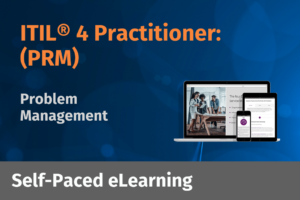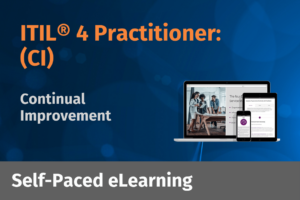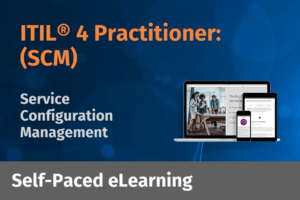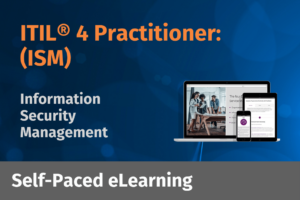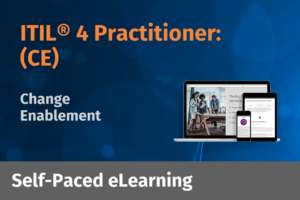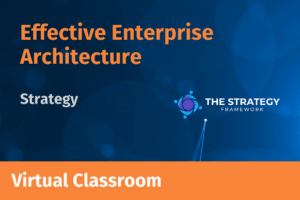Strategy without Culture won’t work when implementing AI and data transformational change
The Fourth Industrial Revolution is upon us and it will change every aspect of our working lives. There is now a new era of doing business which relies on data, where data-driven decisions result in better business outcomes. Being able to find more sustainable ways to improve quality and increase efficiency, or extract additional revenues through Artificial Intelligence (AI) and other emerging technologies is an almost irresistible proposition.
However, it is impossible for leaders to execute an AI and data strategy without investing in providing staff with the information they need to see how they can play a positive role in the future. The strategy needs to bring people on the journey to an AI and data culture where employees embrace technology.
AI can be utilised by organisations as a strategic capability to achieve positive transformational change when employees are appropriately skilled to use AI to innovate and reach business outcomes not previously possible.
Here are five tips on how to produce an effective AI and data strategy that can be realised through a committed organisation.
1 Explain the ‘why’
A lot of leaders don’t know where to start as there are many types of technologies out there. Below is a representation of the five superpowers of AI and data and why they are important for organisations in simple terms.

Figure 1: Superpowers of Artificial Intelligence (AI) and Data
It is useful to have professionals that have a good mix of technical and business expertise to explain how technology can positively contribute to the organisation’s goals. For example, in the health industry, the use of machine learning enables the IBM Watson application to play a leading role by being able to efficiently read medical images. This assists doctors in making better and more informed decisions. It is likely that in the future patients will demand assurances that AI contributed to the validity of their diagnosis.
2 Become insight driven
As we see AI disrupting businesses and paving the way to innovative service delivery, leaders are also beginning to realise the challenges of big data management. This is an age where AI and data are vital for business success, but there is also the potential for money to be lost in a data swamp unless objectives are clearly defined. The strategy developed needs to consider the end-to-end process and include the foundational activities that are necessary to become an organisation that can act on insights gained from quality data that is timely and accurate. The following figure shows at a high level how data is transformed to reach the objective of being able to act on insights gained.

Figure 2: Data to Insight Value Stream
3 Collaborate in strategy development
I have run AI and data strategy workshops as a Strategic Architect (Enterprise Architect Strategist) that have revealed many different drivers and objectives from participants, depending on what discipline they specialise in and their industry experience. Although people have their own biases and views on what path to take, it is important to capture those views and collectively develop a strategy that is more well-rounded and will resonate with everyone in the organisation. This supports the data-driven culture. The following figure shows how a strategy can be developed using the Strategic Architecture template, described with a number of examples in AI and Data Strategy.

Figure 3: Strategic Architecture Template
It is important to work with senior ICT and business leaders including the Chief Data Officer or equivalent, and other senior data and information professionals in the development of an AI and data strategy. Running a workshop with these stakeholders is important to identify their concerns, and obtain support and direction. Having a Strategic Architect with knowledge of AI and data to facilitate and guide discussions is essential to keep the momentum on track and provide the industry knowledge required. It is noted that the vision needs to be owned by senior management and it needs to be an inspirational statement of the outcome to be achieved. For example, a vision statement that incorporates culture in the AI and Data Strategy could be ‘Take our people on a journey to evolve as artificial intelligence evolves’.
4 Involve Everyone in a Culture Survey
At the heart of a successful AI and data strategy is an understanding of how the people in the organisation can be inspired and supported to create a culture that embraces the changes introduced through technologies and new work practices. It is crucial to get a baseline by conducting a pulse survey to gain insights into the current state of data values and behaviours. A pulse survey can be completed to assess where your current organisation culture is at, against key business drivers. Short- and medium-term targets can be developed to achieve a culture that will enable the strategy to be realised and feed into project initiatives. Involvement of Organisational Change Specialists is vital as they are best placed to implement changes in culture.
5 Lift organisational capabilities to achieve outcomes
Most successful organisations decompose strategies into objectives, objectives into tasks and tasks into individual actions, in order to achieve business outcomes. This works perfectly well when all the employees are motivated at the same level and align with each other consistently. Strategy execution requires a strong motivational leader who is well versed in balancing people, process, data/information and technology with a holistic view of how to mobilise the organisation resources to get the best investment value and outcome. Often, translating strategy into action relies on defining the right projects to develop and optimise the business capabilities by managing quality and investment priorities.
Figure 4: People, Process, Information and Technology for AI and Data
Information (and data) is represented in the ‘data to insight triangle’ above and is central to the other capabilities including people, process and technology in an AI and data strategy. There is a need for a coordinated effort across all the layers of the ‘data to insight triangle’, to deliver the AI and data strategy. A capability uplift is required across the organisation to ensure that the potential of AI and data is realised. No organisation will survive the transformational changes coming without an effective AI and data strategy that can achieve the right culture in an organisation to realise benefits. Helping businesses, from potential customer identification to after-sale services, AI and data can improve the efficiency of business in every sphere. With the induction of an AI and data strategy, companies can reach out to customers easily when required, where required. The evolution of AI and data is turning out to be an inevitable necessity for businesses striving for sustainability and the essential ingredient to surge ahead of competitors.
The five tips provided in this article are a sample of what is in AI and Data Strategy, available on Amazon Books. This book is suitable for senior IT and business professionals who want to understand AI and develop strategy that can be embraced by the organisation.
Author: Nigel Schmalkuche is a results-orientated Strategic Architect with 25 years’ experience across government and private organisations. He is a leader and a visionary in Australia in the field of Artificial Intelligence, Big Data, Cloud Computing and Digital Disruption. He enjoys sharing practical examples from his experience with participants as an Enterprise Architect Coach for the EA Learning.
To find out more about the EA Learning Business Architecture training courses please fill out the below form or click here to view our course range.



